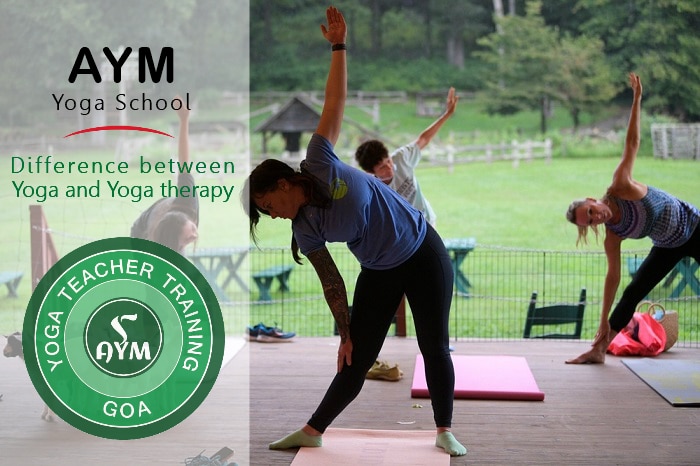
The difference between yoga and yoga therapy
Have you ever wondered what makes yoga therapy different from yoga?? Although most of the yoga styles seem therapeutic to people, there is another term for yoga therapy? And what is right for the people. Yoga is an ancient discipline that unites your body with your mind and soul through breath, asana practice, and meditation. Yoga is about discovering your higher spiritual side and being in oneness with it. Yoga therapy is all about putting all the applications of yoga into the practices dedicated to an individual’s health and well-being. Swami Kuvalayananda coined the term Yoga Therapy in 1920, and he developed a whole new branch of yoga and its impact on various ailments. It opened a new research gateway to yoga and how it leads an individual to optimal well-being.
What sets yoga apart from yoga therapy:
The most significant difference that sets yoga therapy apart from yoga is its individualist approach. At the same time, yoga is generally taught in a group or class setting where the yoga teachers plan the sequence of asana, pranayama, or meditation by considering what is best for the class and altering the courses according to the need of the level. Yoga therapy is more like an individual approach where one has to work on specific ailments or medical conditions. The yoga therapy course is tailored to the needs of the patient and their illness and solely focuses on utilizing all the tools and practices of yoga to improve their condition. So rather than a sequence for everyone else in the class, yoga therapy students practice a customized series for them.
Yoga therapy works with a goal:
In yoga therapy, every session is designed according to the need of the individuals. When the therapist has a clear mental picture of the individual ailments, whether it is recovering from diseases, they will tailor a program specifically addressing the patient’s condition.
The yoga therapy session is solely focused on individual needs. The therapist supports the person towards the journey of recovery and regaining an individual’s health through his medical and yogic knowledge. A therapist will adjust the poses according to the need of the body and teach you to modify each yoga pose according to the body with the help of yoga props to get the maximum benefit of each pose.
Training and the expertise of a yoga therapist:
Typically, a yoga therapist’s training is a lot different than a yoga teacher’s and mostly requires more than a 500-hour yoga teacher training. This training is supported by the help of many medical professionals, psychologists, and doctors as they deal with various medical ailments. These medical professionals will help them by providing in-depth knowledge of physiotherapy, anatomy, mental health, and medicine to keep yoga in the context.
Yoga therapy increases bodily awareness, which helps in the rapid healing of the individual. It doesn’t work to replace modern medicine. Yoga therapy focuses on healing by working on it and offering an alternative means to help people recover from a specific ailment.
